Introduction
Accurate and clean data is the backbone of effective decision making. Whether you’re managing a sales record, a contact list, or any other data set, duplicate entries can quickly become a source of confusion and errors. Imagine making a critical business decision based on erroneous data – it’s a risk you can’t afford. That’s why it’s essential to master the skill of removing duplicates in Excel. This simple yet powerful technique ensures that your data remains reliable and easy to manage, setting the stage for more reliable and accurate analysis. Here’s how you can easily remove duplicates in Excel.
Overview
- Deduplication ensures that your data remains reliable for accurate analysis and decision making.
- Learn how to quickly select and clean your data range to remove duplicates in Excel.
- Use Excel’s “Remove Duplicates” tool to efficiently remove redundant entries from your data set.
- Choose specific columns to check for duplicates to tailor the process to your data needs.
- After deletion, verify your data to ensure accuracy and use backup strategies for your safety.
Why should I remove duplicates in Excel?
Removing duplicates in Excel is essential to maintaining data accuracy and integrity. Duplicate entries can distort analysis, lead to incorrect conclusions, and cause inconsistencies in reports. Removing duplicates ensures that each data point is unique, which improves the reliability of results. It also helps optimize storage, reduce file sizes, and improve the performance of Excel operations. Whether you're managing a large data set or preparing a report, removing duplicates streamlines your data, making it cleaner and more manageable for analysis and decision making.
Step 1: Select the data range
First, select the range of cells you want to clean up to remove duplicates. Here's how to do it:
- Open your Excel file and go to the spreadsheet with the data.
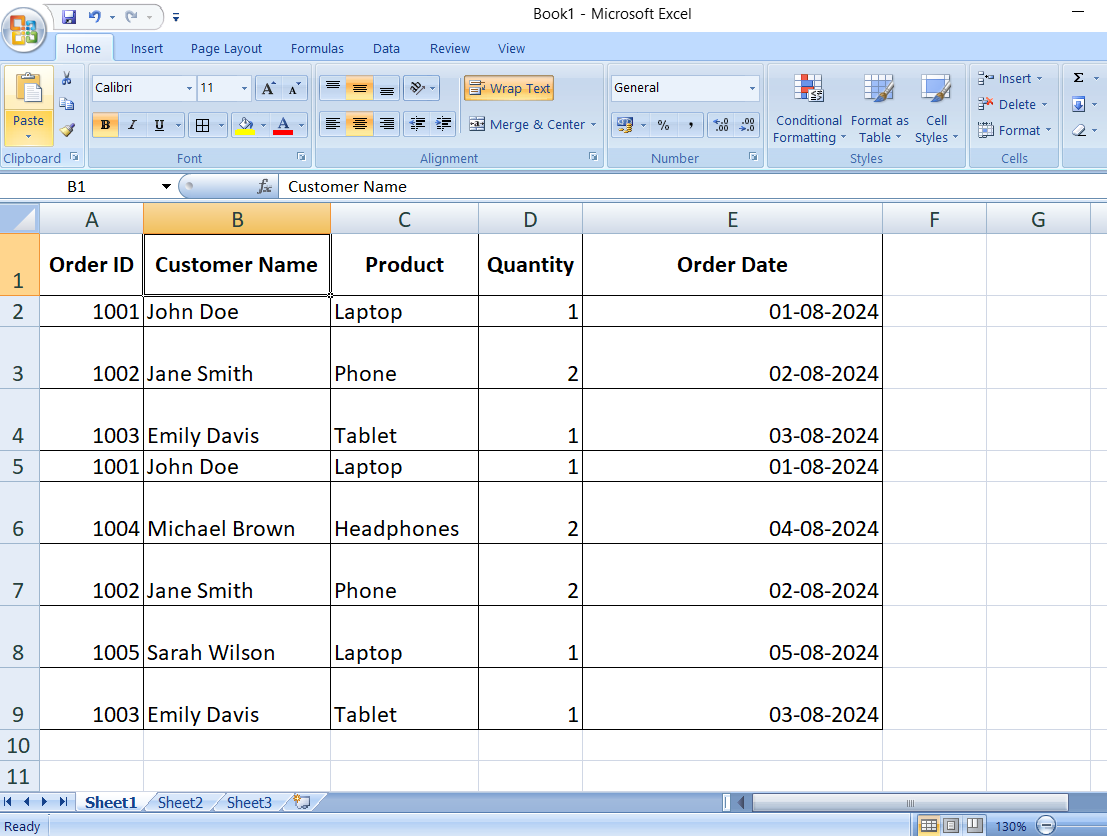
- Highlight the cells you want to check for duplicates. You can use the keyboard shortcut Ctrl + Shift + arrow keys or drag your mouse across the cells.
- To select the entire worksheet, press Ctrl + A or click the triangle icon in the upper-left corner of the grid.
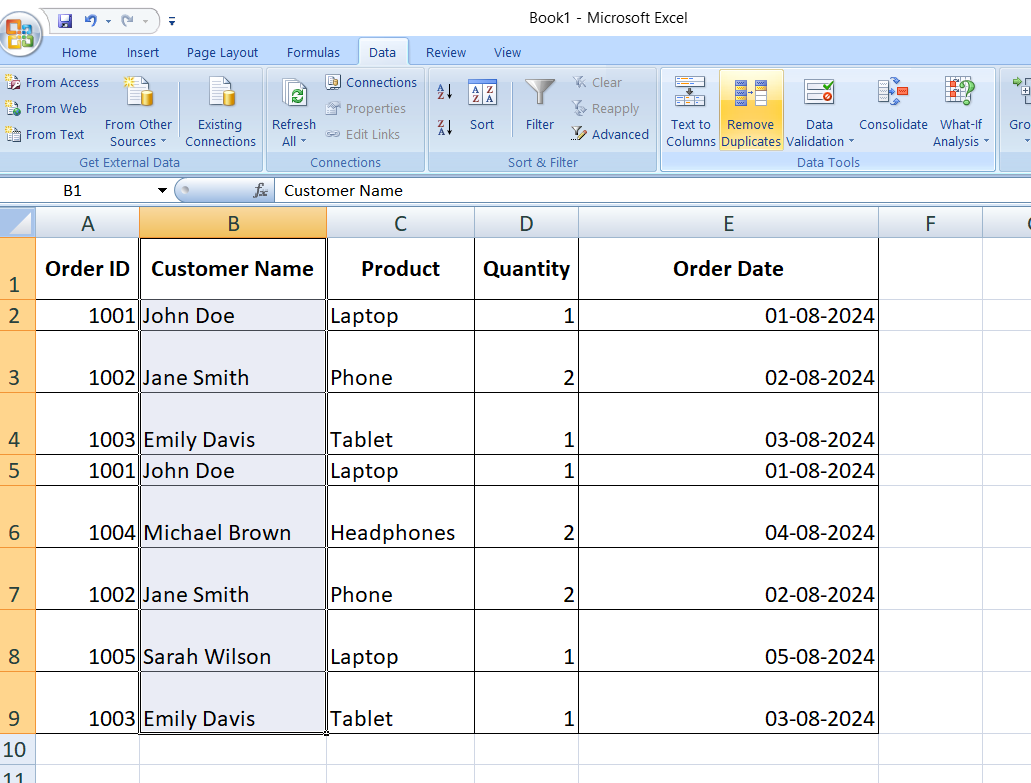
Read also: Microsoft Excel for data analysis
A built-in function in Excel is designed to help eliminate duplicate values:
- Open the Excel ribbon at the top of the screen and select the “Data” tab.

- The “Remove Duplicates” option is located in the “Data Tools” group. To open the Remove Duplicates dialog box, click it.
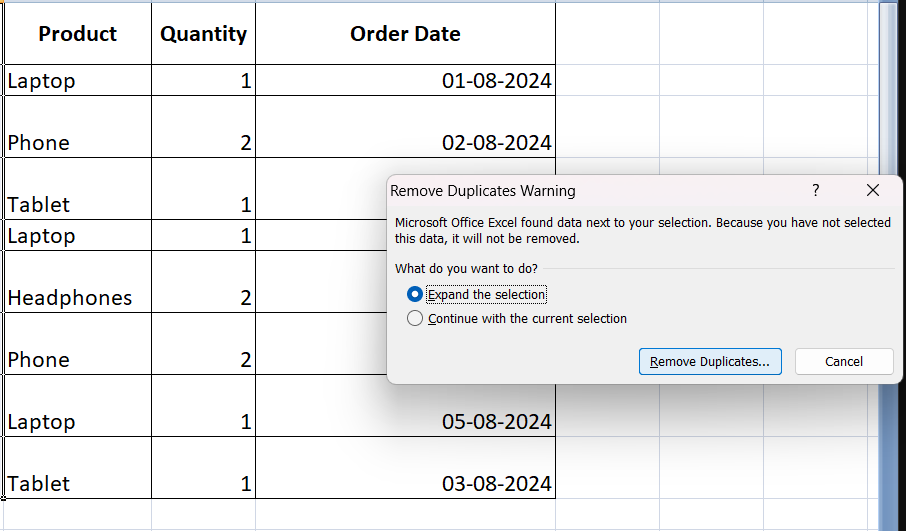
Step 3: Choose the columns to check for duplicates
You can choose which columns you want to check for duplicates in the Remove Duplicates dialog box:
- By default, all columns in the selected range are checked.
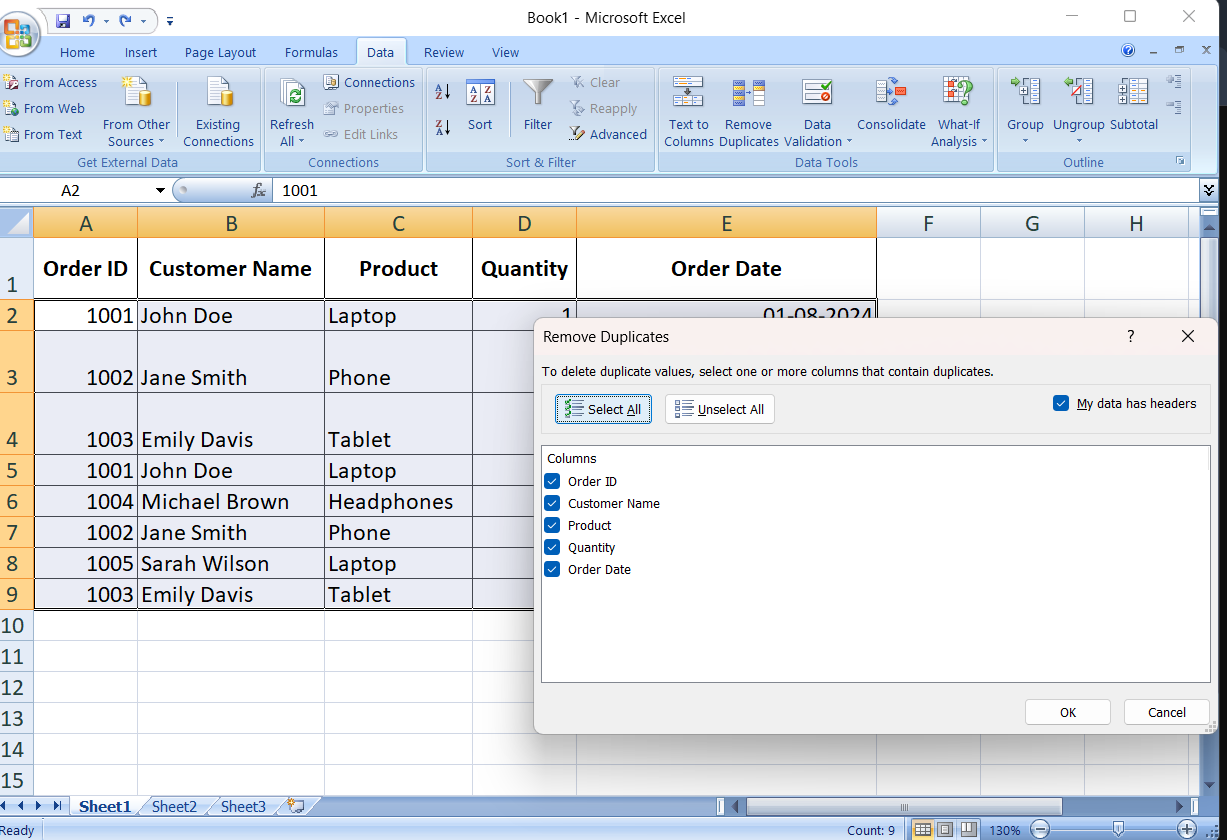
- Rows with the same values in the marked columns are considered duplicates.
- If you only want to check specific columns, uncheck the others.
- For example, if you are managing a customer list and want to remove duplicates based on email addresses, uncheck all columns except the one containing the email addresses.
- After selecting the columns, press “OK”.
Step 4: Review the results
Excel will process the data once you click “OK” and display a summary:
- You will be able to see how many unique values remain in the message box and the number of duplicate values identified and removed.
- Click “OK” to close the message box.
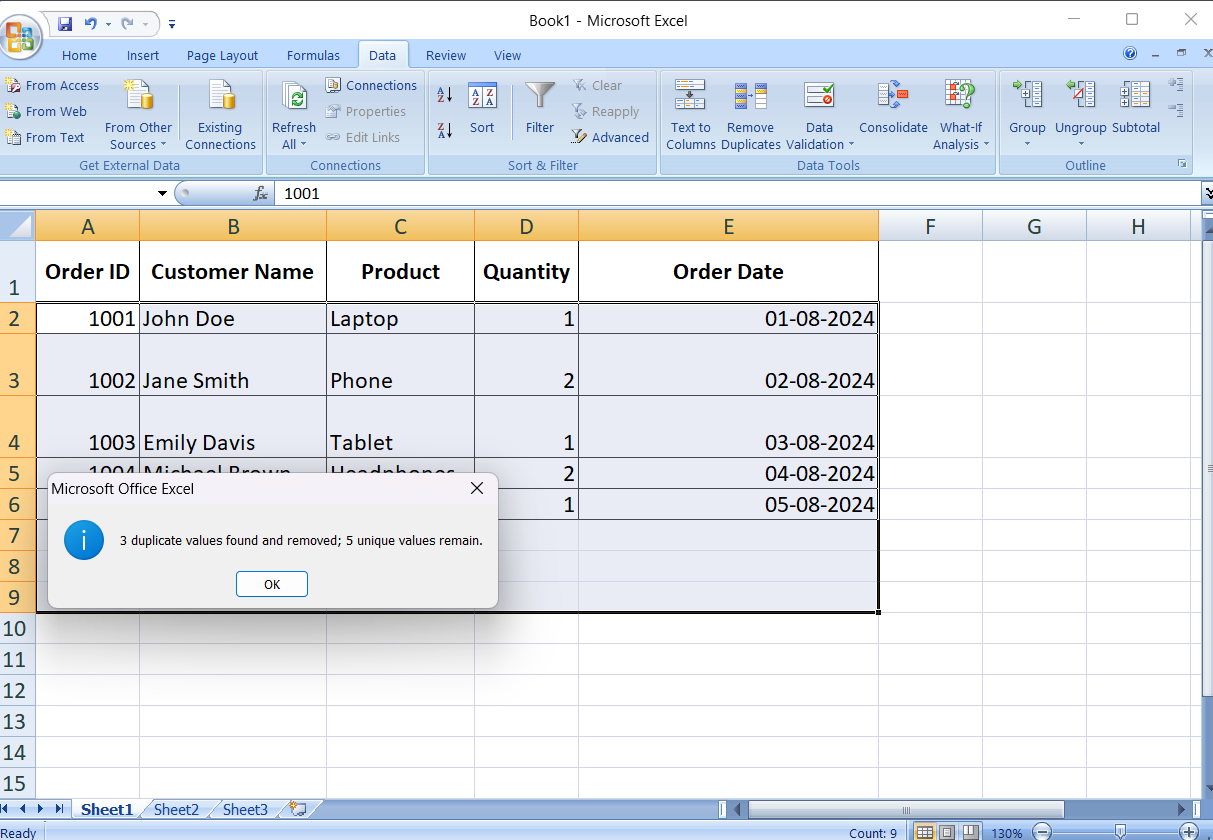
Step 5: Verify your data
It is advisable to confirm that the data is as expected and that duplicates have been properly removed:
- As you scroll through it, make sure there are no more duplicates in your dataset.
- If something doesn't look right, you can use the “Undo” option (Ctrl + Z) to undo your changes.
Additional Tips
- Keep a backup: It's a good idea to keep a backup of the original data before removing duplicates. You can do this by making a copy of the spreadsheet or by renaming the file.
- Advanced filtering: If you want even more control, you can use Excel’s “Advanced Filter” option (located on the “Data” tab) to filter and display only unique entries without actually removing duplicates.
Conclusion
Excel The easy-to-use and powerful deduplication feature helps keep your data accurate. By following these steps, you can quickly tidy up your spreadsheets and ensure your data is accurate and reliable. Excel functions make it easy to effectively manage duplicates, no matter how large the data set you're working with is.
Frequently Asked Questions
Answer: Select your data, go to the “Data” tab and click “Remove duplicates”.
Answer: Yes, in the “Remove Duplicates” dialog box, uncheck the columns you do not want to include.
Answer: Excel keeps the first occurrence and removes subsequent duplicates.
Answer: Yes, you can undo it immediately by pressing Ctrl + Z.
Answer: Use the “Advanced Filter” option to filter and view unique values without deleting data.
 NEWSLETTER
NEWSLETTER





